Note: This website was automatically translated, so some terms or nuances may not be completely accurate.
JAL Sky Museum: The Primary Point of Contact Beyond Travel

Corporate museums occupy a buffer zone spanning both the academic realm of "museums" and the business realm of "corporations." They are organizations that collaborate extensively with various corporate departments responsible for their operation, including public relations, branding, advertising, and human resources. In this series, PR professionals will introduce diverse corporate museums, examining their roles, functions, and potential.
The "JAL Sky Museum" is a corporate museum notoriously difficult to book, filling up within 1-2 minutes of reservations opening one month prior to the desired visit date. This article introduces JAL's museum, which can be seen as a "contact point" renewing the relationship between JAL and society. It delves not only into its entertainment aspect transcending generations and nationalities but also explores how it creates societal impact as a social contribution activity.
Research and Text: Yuta Ishii (PR Consulting Dentsu Inc.)
A Popular Museum with Difficult Reservations
The JAL Sky Museum opened on July 22, 2013, in the New Maintenance Area of Haneda Airport. It evolved from the "JAL Aircraft Maintenance Facility Tours," a social contribution activity conducted since the mid-1950s, shortly after Japan Airlines (JAL) was founded. It has gained popularity as an experiential museum where visitors can learn about aviation industry jobs and "the history of Japan's skies" while seeing aircraft up close in hangars. Its popularity is evident from the cumulative visitor count exceeding 600,000 since opening and the annual peak attendance of approximately 140,000 (2018).
Furthermore, renovations began in January 2021, focusing on "digitalization" to increase the amount of information available severalfold, transforming it into a facility that offers enjoyment with every visit. After a year of planning, about six months of construction, and a temporary closure due to the pandemic, it reopened in May 2022. It now stands as one of the world's largest airline museums, boasting unparalleled depth and richness. Admission is free. Reservations open at 9:30 AM on the same day one month prior to the desired visit date and typically fill up within 1-2 minutes, earning it the reputation as a "museum where reservations are impossible to get."
The standard tour combines a museum tour (60 minutes) with a hangar tour (50 minutes). Tours run three times daily, accommodating 40 people per session (as of May 2023). This time, we were guided by Mr. Toshiya Yoshida, Group Leader of the Social Contribution Group within Japan Airlines' ESG Promotion Department. He explained the museum's role and highlights. We would like to introduce this museum, which embodies JAL's desire to convey the appeal of the aviation industry to aircraft enthusiasts, students seeking employment, and children. It carries the social mission of conveying "the history of Japan's skies" as the nation's first post-war domestic airline.
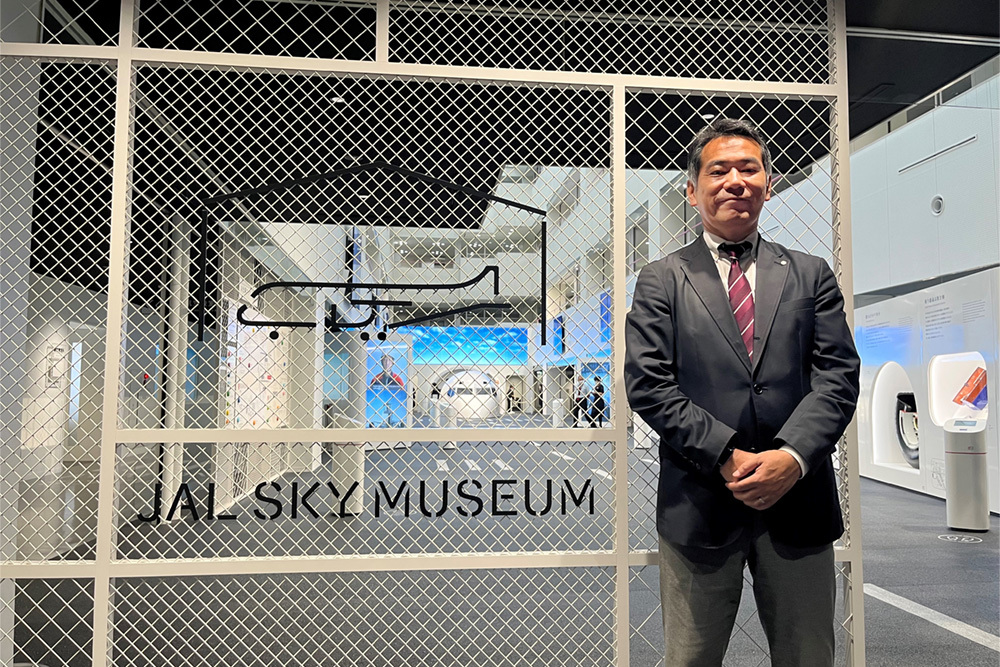
Targeting everyone worldwide. Creating a versatile space
The JAL Sky Museum sees many senior visitors in their 50s to 70s on weekdays and families with children on weekends. Before the renovation, visits by couples in their teens and twenties were rare. However, by advancing the digitization of exhibits and transforming it into a space enjoyable for adults, the generational imbalance has reportedly decreased. Its excellent access, adjacent to Haneda Airport, also attracts overseas tourists visiting before or after their trip to Japan, who now account for about 10% of all visitors (April 2023).
"I believe there is no other aviation museum in the world welcoming this many visitors. We will continue to enhance our reception capabilities and strengthen our outreach through social media and other channels to welcome visitors from around the world. Furthermore, the renovation enabled the space to be used for multiple purposes. It now accommodates internal company events like employee training and recruitment briefings, as well as collaborative events with other industries, lectures, and press conferences. At the request of the PR department, it's increasingly being used for television program filming. We also hope to host public viewings of sporting events and concerts in the future," said Mr. Yoshida.
Furthermore, during the facility's renovation, discussions were held with individuals with disabilities regarding issues in the exhibition methods. The feedback was incorporated into the renovations, resulting in an inclusive space where more people, regardless of disability, can enjoy the exhibits through their five senses.
An exhibition honoring the people who support air travel, where the JAL Philosophy lives on
As the elevator doors open from the entrance to the museum space, the "Sky Runway," reminiscent of a runway, appears before your eyes.
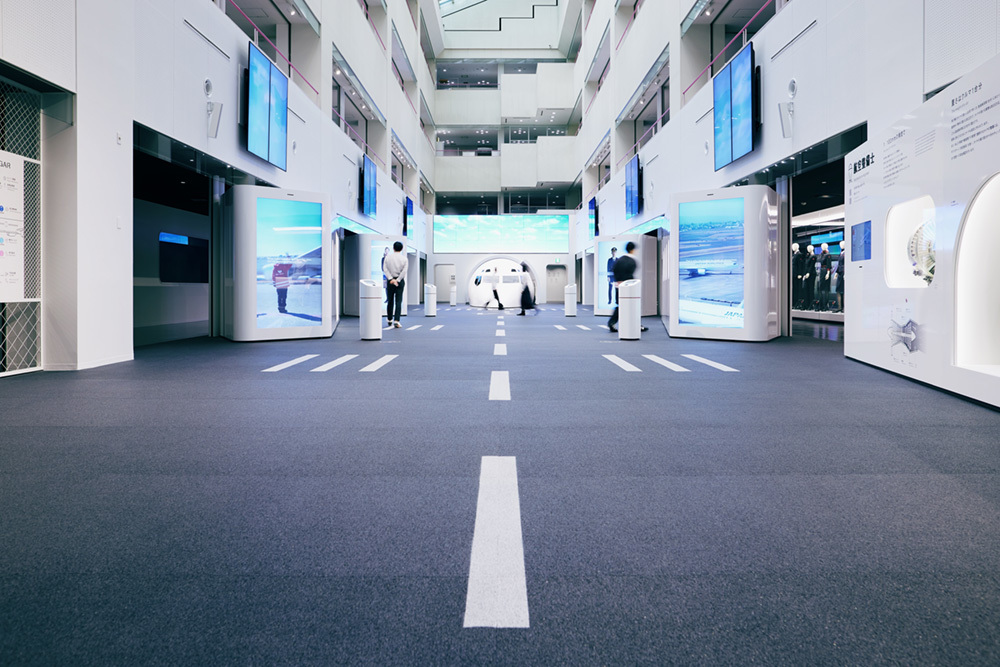 Sky Runway (Photo courtesy of ©aircord inc.)
Sky Runway (Photo courtesy of ©aircord inc.)Here, the "Job Introduction" booth explains the work of JAL staff, while models allow visitors to experience the atmosphere of an aircraft cockpit and cabin. Multilingual support is advancing: online reservations are available in Japanese and English, exhibition explanations are provided in both languages, and scanning QR codes enables access to Chinese (Simplified) and Korean.
Along the runway lined with large digital signage, visitors can watch "Job Introduction Videos" featuring current employees. These videos, where nearly life-sized employees speak in their own words about their work, were created based on visitor requests to "hear directly from those on the front lines." This "Job Introduction" booth is arranged near the entrance, featuring mechanics, ground staff, ground handling personnel, cabin crew, and flight crew in that order.
"We designed the exhibit hoping to convey, without saying it outright, that providing safe air travel requires reliably passing the baton from 'maintenance technicians' all the way to 'flight crew,' and that every employee consciously strives to deliver better service by embodying one of the JAL Philosophy principles: 'The Best Baton Pass,'" said Mr. Yoshida. JAL experienced bankruptcy in 2010, but the "JAL Philosophy" that supported its subsequent revival is alive and well within the exhibition itself.
A constantly evolving, sensory-stimulating exhibit that satisfies curiosity
"Sky Runway" features substantial hands-on exhibits like large aircraft tires and cargo containers, engaging all five senses. Visitors can step into a cockpit mockup where simulated air traffic radio transmissions create the tension of flight operations, or sit in actual aircraft seats like the "JAL SKY SUITE" and "JAL SKY PREMIUM" – experiences that excite even adults with their sense of the extraordinary.
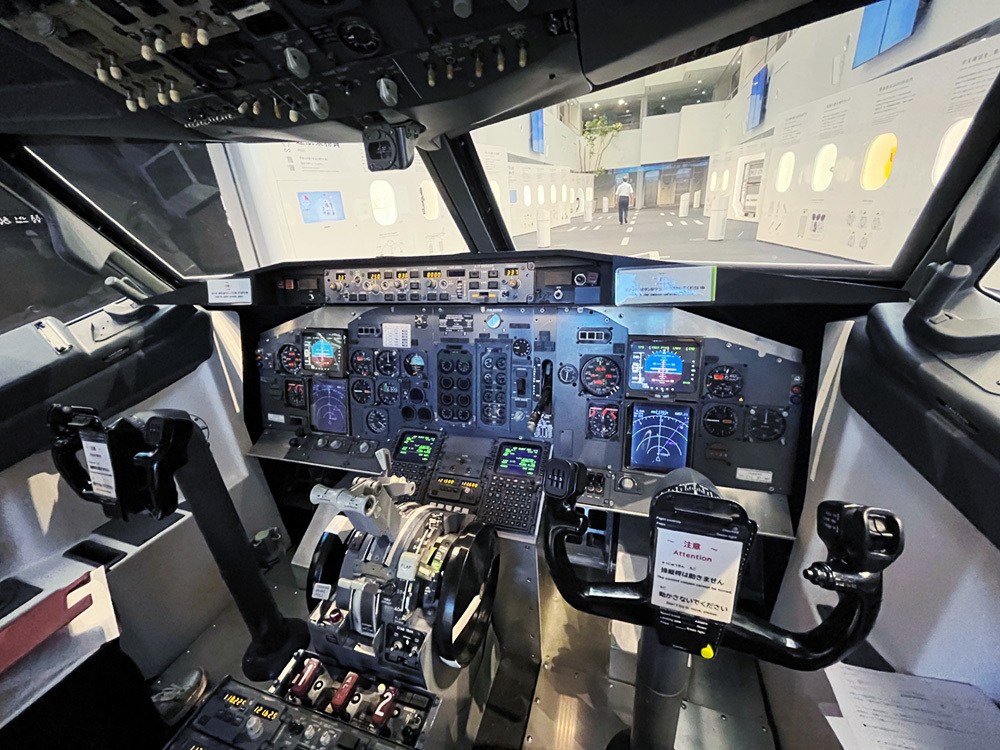
Particularly noteworthy from a sensory perspective is the "In-flight Meal Experience Course." Responding to visitor requests like "We want to eat in-flight meals while viewing aircraft," this course was realized with cooperation from group companies. Enjoying in-flight meals in a lounge overlooking the runway before touring the exhibits creates a journey savored with all five senses. The museum's flexibility in adapting its tour programs based on visitor feedback is another defining feature.
Furthermore, the exhibition guides are former JAL employees who have retired. Experienced individuals from diverse job roles provide tours interwoven with authentic stories from their working days, making the exhibits feel more three-dimensional. This creates a space where retired individuals can fully utilize their skills, a unique effect achievable only through a corporate museum.
The Archives Zone: Mission as Storyteller of Japan's Aviation History
Following the "Sky Runway" is the Archives Zone, designed with the concept of "conveying aviation cultural history, not just aviation history." Here, visitors can explore the history of JAL and Japanese aviation through a digital timeline organized by decade, displays of historical flight attendant uniforms, exhibits of actual historical artifacts, and model aircraft displays. Particularly noteworthy are the digital timeline and the exhibits of actual historical artifacts.
"Driven by the conviction that only JAL can truly narrate 'The History of Japan's Skies,' we invested considerable effort and time in building these archives. This is the only place where visitors can relive the experience of aircraft and air travel from the 1950s and 60s, when flying itself was an extraordinary event. Interestingly, among all exhibits, visitors spend the most time at the 'Digital Timeline.' It's popular because it allows visitors to delve deeper into their own interests. When we received high praise for it, after all the effort we put in, it was especially gratifying," said Mr. Yoshida.

The exhibits include original aircraft design sketches by world-renowned filmmaker Akira Kurosawa. Other highlights are the Future Zone showcasing JAL's initiatives for tomorrow, displays of imperial and special flights, and so much more that 60 minutes feels insufficient. The museum deliberately avoids a fixed route, allowing visitors to explore freely based on their interests.
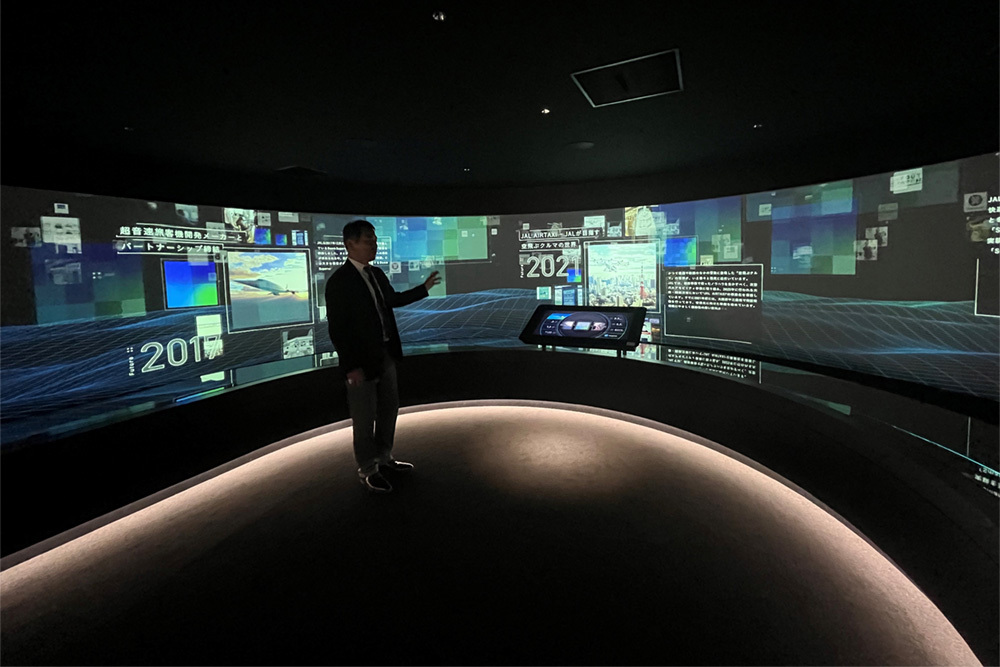
Active aircraft, realistic work scenes. The hangar tour course, with its overwhelming power, is undoubtedly the highlight. The moment the hangar doors open, visitors instinctively gasp and utter words of admiration.

This hangar operates 24 hours a day, 365 days a year, performing aircraft maintenance and inspections. Visitors are simply overwhelmed by the sight of mechanics diligently working on aircraft in the vast space and the dynamic scene of active aircraft lined up. You can also see departing aircraft up close, a truly captivating sight. Combined with the guide's detailed explanations, the tour leaves you feeling much closer to aircraft. The hangar has no air conditioning, making summer and winter harsh environments. This fosters a deep appreciation for the mechanics working around the clock to ensure passenger safety.
"Many visitors truly realize that staff like mechanics, whom they don't normally interact with, are supporting safe air travel. On the other hand, the mechanics themselves feel a heightened sense of purpose and pride in their work thanks to the visitors' attention, creating a positive mutual effect," says Mr. Yoshida.
Beyond travel, it's the largest. A contact point between the audience and JAL
The JAL Sky Museum is arguably the strongest PR tool, spontaneously fostering better relationships with the public—including all internal and external stakeholders—as the largest contact point with JAL outside of air travel itself. It plays a significant role in enhancing the "familiarity with JAL" among a wide audience and creating diverse "relationships and connections." This audience includes employees visiting for training, students attending recruitment briefings, aviation fans and influencers from around the world, young people visiting as pilgrims to drama filming locations, partner companies holding joint press conferences, visitors from government and local authorities, local elementary, junior high, and high school students, and school trip students from across the nation.
A Museum That Makes Everyone's Hearts Soar, Embodied Purpose
The JAL Sky Museum is a living entity. Visitors can freely choose their tour route, content is regularly updated through digitalization, and each guide's commentary has its own unique character, ensuring enjoyment on every visit. During this tour, Mr. Yoshida shared ideas for further evolution, stating, "In the Future Zone, we aim to create a space where visitors can enjoy not only still images but also videos." If given the chance to visit again, new discoveries are sure to await.
As I repeatedly let out childlike exclamations during the tour, I recalled JAL's stated purpose: "We aim to realize a vibrant society and future where people and goods move freely, striving to become the world's most chosen and beloved airline group." The JAL Sky Museum is a "free and vibrant place" that embodies JAL's purpose—continuing to evolve to become the world's most chosen and beloved airline.
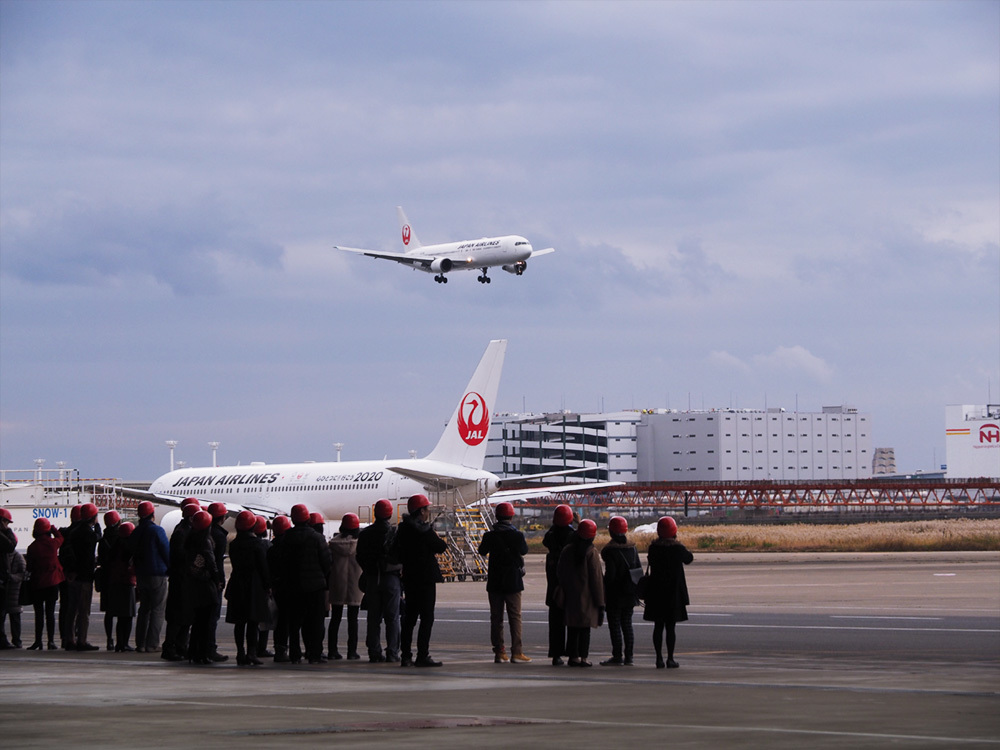
[Editor's Note] (From the Web Dentsu Inc. Editorial Department)
Everyone dreams of "flying through the sky." After all, the human body lacks that ability. Since childhood, we've surely fantasized about how wonderful it would feel to soar through the air like a bird... That's why fictional heroes and heroines usually fly. Using capes, gadgets, magic, or superpowers.
JAL flies for Japan. While putting customers first is paramount, it also carries the weight of this nation's society, economy, daily life, and future upon its wings. It continues to bear that responsibility.
The responsibility of flying bearing the crane emblem—the symbol of the rising sun—is immense. Precisely because of this, I believe everyone's hopes are always waiting ahead.
Was this article helpful?
Newsletter registration is here
We select and publish important news every day
For inquiries about this article
Back Numbers
Author

Yuta Ishii
PR Consulting Dentsu Inc.
Stakeholder Engagement Bureau Corporate Communications Division 2
Department Head / Chief Consultant
Born in 1979. Since joining PR Consulting Dentsu Inc., he has been involved in all aspects of communication strategy, addressing diverse issues ranging from the environment to human rights. He currently focuses on corporate branding that aims to achieve both social and economic impact. His signature look: shaved head and white T-shirt.




